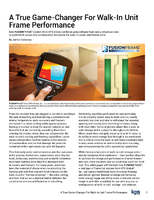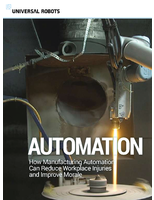XRF Spectrometer features motorized turret.
Press Release Summary:
Available with mono-capillary optics or as a PC with high-intensity poly-capillary optic, Orbis micro-XRF elemental analyzer incorporates motorized turret that integrates video and x-ray optics for coaxial sample view and x-ray analysis over rough sample topography without sacrificing signal intensity. Users can make elemental analyses on small samples such as particles, fragments, and inclusions, or conduct automated multi-point and elemental imaging analysis on larger samples.
Original Press Release:
EDAX Launches Latest Generation of Micro X-Ray Fluorescence Spectrometer
Orbis Sets a New Standard in Analytical Flexibility
MAHWAH, NJ - EDAX Inc., a leader in micro X-ray fluorescence, has introduced the Orbis micro-XRF elemental analyzer system, setting a new standard in analytical flexibility. Building on more than 10 years of micro-XRF experience, the Orbis spectrometer incorporates a unique motorized turret that integrates video and X-ray optics allowing coaxial sample view and X-ray analysis.
Two additional X-ray collimators can be added to the optical turret for a total of three X-ray beam sizes to expand Orbis' analytical capabilities beyond traditional micro-XRF analysis. The working distance also is increased to allow analysis over rough sample topography without sacrificing signal intensity.
Primary beam filters can be used with a variety of X-ray optics to allow true XRF analytical capabilities in a micro-spot analysis. The Orbis system is available with mono-capillary optics or as the Orbis PC with an ultra high-intensity poly-capillary optic.
Detection limits with the Orbis PC can be < 5 PPM for a spot size of 30 to 40 µm using primary beam filters. The Orbis is also available with a large area LN-Free SDD for the ultimate in signal throughput while maintaining excellent elemental peak resolution further improving detection limits.
All this analytical flexibility is packaged into a table-top unit with powerful, easy-to-use analysis software. Orbis users can make elemental analyses on small samples such as particles, fragments and inclusions, or conduct automated multi-point and elemental imaging analysis on larger samples with all the benefits and simplicity of an XRF analyzer.
Among the benefits of the Orbis system are non-destructive measurement, minimal sample preparation (e.g. no sample coating is necessary), improved sensitivity for many elements in comparison to SEM/EDS, inclusion and coating thickness analysis with the penetrating power of X-rays, and analysis of wet samples.
Applications for the Orbis micro-XRF system span a gamut of end uses and include criminal forensics, industrial forensics and quality control, non-destructive materials testing, RoHS compliance, layer thickness and composition analysis, geologic composition and more.
EDAX is the acknowledged leader in Energy Dispersive Microanalysis, Electron BackScatter Diffraction and X-ray Fluorescence instrumentation. It designs, manufactures, installs and services high-quality products and systems for leading companies in the semiconductor, metals, geological, pharmaceutical, biomaterials, and ceramics markets.
Since 1962, EDAX has used its knowledge and experience to develop ultra-sensitive silicon radiation sensors, digital electronics and specialized application software that facilitate solutions to research, development and industrial requirements.
EDAX is a unit of AMETEK Materials Analysis Division. AMETEK, Inc. is a leading global manufacturer of electronic instruments and electromechanical devices with 2007 sales of more than $2.1 billion.
For further information about EDAX, contact us at:
EDAX
91 McKee Drive, Mahwah, NJ 07430
Tel: (201) 529-4880
Fax: (201) 529-3156
E-mail: info.edax@ametek.com
Website: www.edax.com




